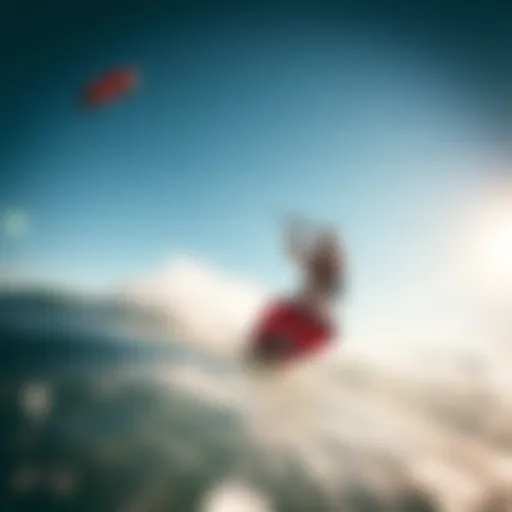Kite Surfing in the Florida Keys: A Comprehensive Guide
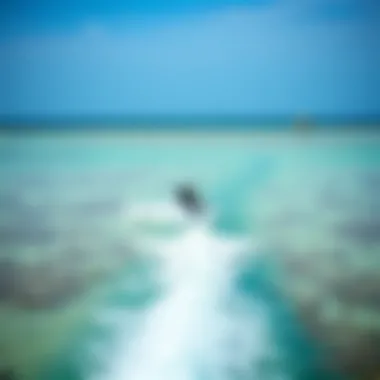
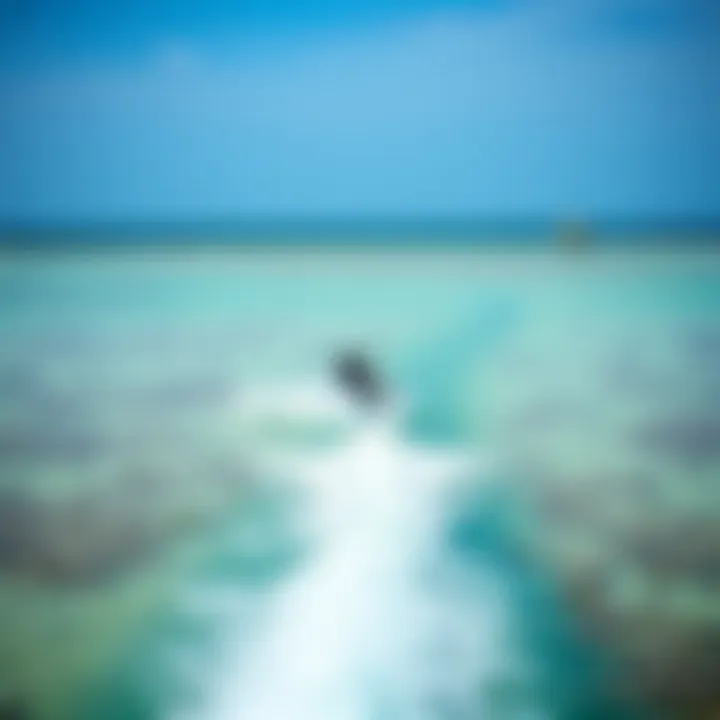
Intro
Kite surfing in the Florida Keys offers more than just an adrenaline rush; it’s an immersive experience deeply intertwined with the local culture and beautiful scenery. From the vast azure waters that stretch as far as the eye can see to the charming communities that dot the coasts, this region attracts army of kiteboarders eager to catch the winds. As you gear up for your next adventure, understanding the nuances of this dynamic sport will not only enrich your personal enjoyment but also connect you to the thriving community that nurtures it.
This article intends to serve as both a guide and a companion, covering everything from essential equipment insights to techniques that cater to both beginners and seasoned experts alike.
In the following sections, we will delve into the specific gear that can elevate your kite surfing experience and explore techniques that can help you navigate the waves like a pro. Whether you’re contemplating your first lesson or looking to master advanced stunts, the Florida Keys has something to offer for every level of kiteboarder.
Foreword to Kite Surfing in the Florida Keys
Kite surfing has become a thrilling pursuit for many adventure enthusiasts globally, but few places offer the mix of exhilarating conditions and vibrant culture quite like the Florida Keys. Stretching across a chain of islands, the Keys serve as a unique environment that caters to both beginners and seasoned kiteboarders alike. This article dives deep into the essential elements of kite surfing in this idyllic setting, revealing why it has gained such popularity.
The significance of kite surfing here cannot be understated — from the picturesque views of turquoise waters to the favorable wind conditions, the Florida Keys present an exceptional playground for riders. Kiteboarders come for different reasons; some chase the adrenaline, while others savor the tranquility of gliding over the waves. The unique climate, along with a community that thrives on the shared love for the sport, enhances the entire experience.
One key factor to consider is that kite surfing in this region not only continues to grow as a sport but it also contributes significantly to local tourism. Shops that offer gear rentals and lessons pop up, and kite surfing events frequently draw large crowds. This vibrant local culture is a blend of amateur and professional talent, creating a fertile ground for skill development and community support.
Moreover, understanding what kite surfing involves means diving into much more than just the act itself. One must consider the specific gear needed, the techniques to master, and the environmental factors at play. Knowing how to select the right kite for varying wind conditions could very well make or break a rider’s day.
Geographic Overview of the Florida Keys
Understanding the geographical layout of the Florida Keys is crucial for any kite surfer looking to make the most out of their experience. Stretching approximately 120 miles from Key Largo to Key West, this chain of islands boasts a unique topography and an array of kite surfing spots, each with its own set of advantages and challenges. The composition of these islands, surrounded by warm waters and tropical breezes, creates an ideal environment for both novice and seasoned kiteboarders.
The significance of this coastal region cannot be overstated. The proximity of the land to deep water gives kite surfers access to diverse conditions, allowing for varying levels of difficulty and a wide array of techniques to explore. A kite surfer might find themselves zipping across serene lagoons one moment, only to be greeted by challenging waves the next. Such varied encounters offer a rich tapestry of experiences that can hone one's skills and elevate their passion for the sport.
Key Locations for Kite Surfing
The Florida Keys are dotted with numerous spots, each presenting distinct features and catering to various skill levels. Here are some of the noteworthy locations:
- Key Biscayne: Known for its stunning scenery and consistent winds, this area attracts many riders. Its expansive beaches provide ample space for launching and landing kites.
- Islamorada: With flat waters and reliable winds, this region is ideal for beginners. Its shallow sandbars allow for safer practices.
- Marathon: This location offers both coastal and open water conditions. Kite surfers can find a challenge here suitable for intermediate to advanced riders.
- Key West: As the southernmost point in the continental U.S., this place combines vibrant nightlife with fantastic kite surfing opportunities. The waters can get choppy, making it perfect for those looking to test their limits.
When planning a kite surfing trip, it is wise to research each location, as conditions can shift due to various elements such as tides and weather patterns.
Climate and Wind Patterns
The climate in the Florida Keys is characterized by a tropical maritime profile, which aligns perfectly with the pursuit of kite surfing. The average temperature hovers around a balmy 75°F throughout the year, with oceanic breezes providing a refreshing escape from the heat.
Wind patterns in this region are another critical factor affecting kite surfing activities. Generally, the trade winds, which blow predominately from the east, create consistent conditions. The average wind speed ranges from 10 to 20 knots, perfect for kite surfing enthusiasts.
Key points regarding wind conditions include:
- Seasonal Variability: From November to April, the northeastern trade winds are typically stronger and more stable, making this the prime season for kite surfing.
- Tidal Influences: Kite surfers must also consider the tides. At times, tidal currents can alter wind direction and intensity, leading to varying experiences.
- Weather Awareness: Sudden changes in weather can influence wind patterns. Surfers are encouraged to check local forecasts before heading out.
Ultimately, having a keen awareness of the climate and wind dynamics will not only enhance the kite surfing experience but also promote safety and enjoyment on the water.
"The wind, water, and waves can provide an exhilarating experience, but understanding the environment is key to a successful kite surfing adventure."
For more details on weather patterns and kite surfing conditions, you may check websites like NOAA.gov for forecasts and safety tips.
Best Seasons for Kite Surfing
Determining the best seasons for kite surfing in the Florida Keys is crucial for both novice and seasoned riders. Various factors play into the seasonal experiences, including wind conditions, temperature, and water state. Knowing when the elements align can greatly enhance your kite surfing adventures and significantly impact the quality of rides you can achieve.
Winter Kite Surfing Experiences
Winter in the Florida Keys, roughly from December to March, offers some of the most favorable conditions for kite surfing. During these months, the wind patterns establish a reliable north-easterly flow, often generating consistent breezes ranging from 15 to 25 knots. This not only caters to thrill-seekers but also ensures a stable atmosphere for beginners to practice and hone their skills in less turbulent conditions.
Additionally, the water temperatures remain mild, fluctuating around 70°F, inviting kite surfers to spend extended periods on the water. The winter months also tend to attract fewer tourists, allowing riders to enjoy the waves with less crowd interference, particularly at popular spots like Key Biscayne and Bahia Honda State Park.
However, winter kite surfers should still stay vigilant about changing weather patterns. Cold fronts that move through the region can bring sudden shifts in wind direction and intensity. Thus, reviewing wind forecasts on apps like Windy or Windy.com can prove essential. Riders contemplating a winter trip should also consider wearing a light wetsuit to combat the cooler water temperatures, particularly during early morning or late evening sessions when conditions dip.
"Riding in the winter months isn't just about the adrenaline; it’s about riding near clear waters under the winter sun—it's a unique experience!"
Summer Conditions and Challenges
As the Florida sun reaches its peak from June to August, kite surfing experiences pivot significantly. While summer brings warmer temperatures—often exceeding 85°F—the wind conditions fluctuate, presenting both opportunities and challenges.
Afternoon thunderstorms can brew quickly, causing unpredictable wind patterns that require kite surfers to stay alert. Typically, the winds clock in around 10 to 18 knots, which can be ideal for certain skills but frustrating for others, especially those who prefer stronger winds. Riders interested in effortless gliding should target early morning sessions when winds are usually steadier.
During this season, kite surfers may also encounter increased crowds at popular launch points such as Smathers Beach in Key West. Navigating the busy waters requires heightened awareness and respect for fellow riders, making it an excellent time to build camaraderie while testing personal limits.


In short, summer brings fun in the sun, but it also calls for adaptability and attentiveness to ever-changing conditions. Riders should carry appropriate safety gear and check local weather updates regularly. All in all, being prepared for both ideal and challenging conditions can result in a rewarding kite surfing experience.
Essential Gear for Kite Surfing
The world of kite surfing captivates enthusiasts with its blend of adrenaline, technique, and beauty. To truly enjoy this exhilarating sport, having the right gear is essential. The choices you make in your equipment can make the difference between a thrilling session and a challenging one. Understanding what gear is available—and why it matters—can significantly enhance not only your performance but also your safety while riding the waves.
Kite Selection Based on Skill Level
Choosing the right kite is like picking the right tool for a job. For beginners, opting for a larger kite is generally more forgiving and provides greater lift and stability. A bigger kite catches more wind, which can help novice riders get up on their boards easier. Popular beginner kites often range from 9 to 12 meters, depending on the rider's weight and local wind conditions. This larger size allows for a more gradual learning curve, where one can practice technique without overwhelming power.
As riders gain experience, they should consider transitioning to a kite that better reflects their skill level and riding style. Intermediate riders might opt for a medium-sized kite in the range of 7 to 9 meters, which offers a balance between power and maneuverability. Advanced kiteboarders often choose smaller kites for their quick response and agility. This shift allows for more aggressive tricks and dynamic riding.
“The type of kite you ride can drastically affect your ability to learn new moves and enjoy your time on the water.”
Harness Types and Features
The harness serves a crucial function; it connects you to the kite and helps distribute the pull across your body. When selecting a harness, personal comfort and riding style should weigh heavily in your decision-making process. There are two primary harness types: seat harnesses and waist harnesses.
- Seat Harnesses: Often recommended for beginners, the seat harness provides more support and stability around the lower body. They are less likely to ride up during use, which can be a significant factor for new riders.
- Waist Harnesses: These are favored by more experienced kiteboarders for their greater freedom of movement and ability to perform advanced maneuvers. While they might require a bit of getting used to, many find that they offer better performance in terms of agility.
Additionally, look for features like padding for comfort, durability against wear, and adjustable straps to ensure a secure fit. Harnesses with a built-in safety hook can also provide peace of mind, especially when riding in challenging conditions.
Board Choices for Different Styles
The board you choose in kite surfing significantly impacts your riding style and performance on the water. There are various styles of boards suited for different types of riding, and understanding these differences is key to a tailored experience.
- Twin-Tip Boards: These are versatile boards that allow riders to ride in both directions. They are especially popular among beginners and freestylers due to their forgiving design, making them easier to learn on.
- Directional Boards: Ideal for wave riding, these boards are designed to be ridden in one direction, making them a favorite among those who enjoy surfing-like experiences. They cut through the water with ease and are excellent for those looking to harness the power of the ocean waves.
- Foil Boards: This relatively new addition to the kite surfing world allows riders to glide above the water's surface. Foil boards provide the sensation of flying and can operate in lighter winds, offering a unique experience entirely.
When selecting a board, consider your preferred style, level of experience, and the conditions you’ll be riding in. In the Florida Keys, where conditions can vary, having a tailored board can be a game-changer.
By carefully considering your gear and making informed choices based on your skill level, you can enhance your kite surfing experience to make it not only safer but also more enjoyable. The right gear gives you the confidence to take on challenges and explore what kite surfing in the Florida Keys truly has to offer.
Kite Surfing Techniques
Understanding kite surfing techniques is crucial for both newcomers and seasoned riders. It serves as the backbone of the sport; the proficiency in these techniques can greatly enhance one’s enjoyment and safety while riding the waves in the stunning surroundings of the Florida Keys. Mastering these methods not only improves performance but also deepens one’s connection with the ocean and the kitesurfing community. Without the right techniques, even the best equipment can leave a rider feeling lost in the surf.
Fundamental Techniques for Beginners
For those just getting their feet wet, grasping the fundamental techniques of kite surfing is of utmost importance. A solid foundation allows beginners to progress more quickly and safely. The essential techniques include:
- Kite Control: Learning how to handle the kite is the first step. Beginners should spend time understanding how the kite moves through the wind window and how to control its speed and power.
- Body Dragging: This technique is about getting pulled through the water without the board. It teaches balance and helps riders get used to the power of the kite without the added challenge of a board underfoot.
- Water Starts: This is when a rider begins to stand up on the board after being pulled by the kite. It requires timing and balance, as the rider needs to position the body correctly while simultaneously controlling the kite.
- Riding Basics: Once standing up, it’s important to practice the correct stance, edging, and handling the kite simultaneously to maintain control and speed.
Every rider should take their time to build up these skills. Putting in the hours on the water will lead to mastery and increased enjoyment.
Advanced Moves and Tricks
Once the foundational skills are in place, transitioning to advanced moves and tricks becomes an exciting next step. For many, this is where the real fun begins. Here are some noteworthy advanced techniques:
- Jumping: This trick involves using the kite to gain lift. It requires a delicate balance of speed, kite positioning, and body weight shifting. Getting knee-deep into this skill can elevate a rider’s experience significantly.
- Board Off: In this move, the rider takes their feet off the board while in mid-air, creating an impressive display of skill that takes considerable practice and confidence.
- Kiteloops: This advanced maneuver involves steering the kite in a loop while jumping, generating an exhilarating rush. Riders must have an acute awareness of wind dynamics and personal safety while attempting this.
- Handle Pass: This involves passing the control handle from one hand to the other while in the air, demonstrating precision and timing. This is often looked at as a rite of passage for advanced riders.
These advanced techniques require not only skill but also confidence and a keen understanding of the water and wind conditions. Harnessing the right moves allows kite surfers to express their style and creativity on the water.
"There’s nothing quite like the thrill of mastering a new trick; each accomplishment sends a rush of adrenaline that’s hard to beat."
Safety Practices for Kite Surfers
When it comes to kite surfing, safety is not just an afterthought; it's paramount. Engaging in this exhilarating sport involves navigating wind, waves, and unpredictable environmental factors. Proper safety practices can mean the difference between an unforgettable experience and a potentially dangerous situation. Understanding how to approach kite surfing with safety in mind solidifies one’s skills and prepares riders for the unexpected.
Being knowledgeable about safety practices allows kite surfers to enjoy their time on the water while minimizing risks. This includes understanding one's limits, necessary equipment, and the local conditions that can significantly affect safety. Whether a seasoned rider or new to the game, fostering a keen sense of safety ensures long-term enjoyment and sustainability of the sport.
Understanding Wind Conditions
Wind is the lifeblood of kite surfing, but it's also a double-edged sword. Without a solid grasp of wind conditions, kite surfers could find themselves in precarious situations. First things first, each kite has an optimal wind range that dictates when it's safe to take to the water. For instance, riding with too little wind can lead to a frustrating experience, whereas excessive wind can push even the most skilled surfers to the edge of their capabilities.
A practical approach involves regularly checking local wind forecasts and real-time conditions on platforms like Windy or the National Weather Service. Pay attention to:
- Wind direction: Affects how the kite performs. Onshore winds are typically safer than offshore ones, which can carry riders out to sea.
- Wind strength: Sudden gusts can catch a rider off guard, putting them at risk of losing control.
- Wind fluctuations: Be aware of how wind can change throughout the day, affecting hand placement and kite control.
Implementing these assessments will help you gauge whether it's a day for kite surfing or finding a cozy spot on the beach with a book.
Emergency Procedures and Self-Rescue Techniques

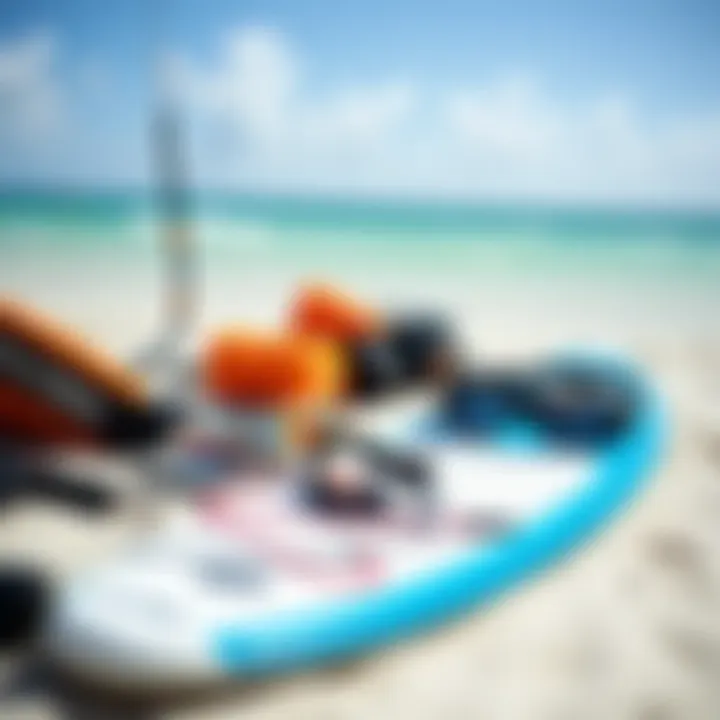
Accidents can happen, even to the most experienced kite boarders, making emergency preparedness essential. Knowing how to act when something goes wrong can save lives or prevent serious injury. Here are some critical procedures to have in mind:
- Kite Down: If you're in trouble and the kite has enough power, it’s important to release the safety system to depower the kite, so it doesn't exacerbate the situation.
- Self-Rescue: If you find yourself unable to return to the shore, using self-rescue may come into play. This involves securing the kite and floating safely while signaling for help if needed. To perform the self-rescue, follow these steps:
- Signal for Help: If visibility allows it, waving your arms can alert others that you need assistance.
- Detach the harness safely and reach for the nearest floatable object.
- With the kite down and secured, paddle back to shore using the board while maintaining focus on your surrounding.
By being prepared for unexpected situations and practicing self-rescue techniques regularly, you can considerably reduce risks on the water. Additionally, always communicate your plans with fellow kite surfers or spotters on the shore, ensuring someone knows your whereabouts and can assist if necessary.
"The best safety practice is not ignoring the wind and water but respecting them."
The emphasis on safety practices not only enriches your own experience but also contributes positively to the whole kite surfing community in the Florida Keys. Engaging in regular drills and discussions about potential emergencies cultivates a proactive culture towards safety.
Kite Surfing Schools and Instructors
Kite surfing, while an exhilarating sport, comes with its fair share of challenges. That’s where the role of kite surfing schools and instructors becomes paramount. They serve as the gateway for newcomers, providing not only essential skills but also fostering a community that celebrates the sport. It's crucial for both novice and seasoned kite surfers to understand the value these establishments bring to their experience.
First off, the importance of learning under the guidance of qualified instructors cannot be overstated. Kite surfing involves a unique blend of physical agility, mental acuity, and an understanding of environmental conditions, like wind and water behaviors. Proper instruction can help mitigate risks associated with the sport and ensure that you're not just surfing but thriving.
Choosing the Right School for Your Level
When selecting a school, it is vital to match the program to your skill level. Most schools in the Florida Keys cater to various levels – from absolute beginners who’ve never touched a kite to advanced riders looking to refine their tricks. Here are some aspects to consider:
- Beginner Programs: Look for schools that offer structured lessons. Many provide a progressive curriculum, starting with theory and gradually leading to on-water practice.
- Advanced Training: For experienced surfers, find schools that specialize in specific tricks or styles, such as freestyle or wave riding.
- Personalized Lessons: Some schools offer one-on-one sessions rather than group classes. These can be particularly beneficial if you have specific goals in mind.
Ultimately, the right school should enhance your comfort level and help you ease into the exciting world of kite surfing.
Reputation and Certifications of Instructors
Before enrolling, take the time to investigate the reputation of the instructors. This can be done through various channels:
- Online Reviews: Websites like Yelp and Facebook are great for getting a feel for past students’ experiences. Positive feedback often points toward a quality school, while recurring complaints may signal caution.
- Certifications: Qualified instructors usually hold certifications from recognized associations such as the International Kiteboarding Organization (IKO) or the Association of Wind and Water Sports (AWWS). These certifications imply that the instructors have met rigorous training requirements and adhere to safety standards.
- Local Recommendations: Engaging with the local kite surfing community can yield valuable insights. Word of mouth from fellow kiteboarders can lead you to well-respected instructors eager to share their knowledge.
"A good instructor doesn't just teach you to ride. They ignite a passion for the sport that lasts a lifetime." - An avid kite surfer
By carefully considering both the school and the instructors, you'll be setting yourself up for a successful kite surfing journey. These choices can greatly influence your progression and enjoyment of the sport. Investing in quality instruction is akin to laying a strong foundation; it supports your endeavors on and off the water, ensuring that your kite surfing experience is both safe and enjoyable.
Local Culture and Community
Kite surfing in the Florida Keys isn't just about catching the wind and slicing through the water; it's also about the vibrant culture and community that surrounds the sport. The local culture here is a rich tapestry woven from the traditions of life near the ocean and the shared passion for this exhilarating water sport. From the colorful beach shacks to the local pubs, kite surfers find themselves immersed in an atmosphere that reflects both adventure and relaxation. There’s a palpable sense of belonging among riders which only amplifies the experience.
Kite Surfing Events and Competitions
Various events and competitions take place throughout the year that showcase not just talent, but also camaraderie among kite surfers in the Keys. One of the standout events is the Key West Kiteboarding Freestyle Open, which attracts participants from around the globe. It’s not just about winning; it’s about celebrating the sport and meeting fellow enthusiasts. Here, riders can share tips, learn from each other, and enjoy the vibrant atmosphere.
Additionally, local kite surfing shops and schools often host fun contests in informal settings that are more about participation than competition. These events are excellent for newcomers. They provide a low-pressure environment to hone skills, meet local riders, and absorb the electric culture that surrounds kite surfing in this unique locale.
"The thrill of kite surfing in the Keys is doubles when connected with others who share the same passion. Networking and building friendships is everything in this sport."
Camaraderie Among Riders
The kite surfing community in the Florida Keys is renowned for its welcoming nature. Riders quickly form bonds, often helping one another with gear, techniques, and even navigating the local waters. This collective spirit is a vital aspect of what makes kite surfing here special. Whether it's assisting someone in the learning curve or sharing the thrill of an awesome ride, the support found among kite surfers fosters an encouraging atmosphere.
If you find yourself on the beach, it's not uncommon to overhear seasoned riders sharing pearls of wisdom with beginners. They might exchange advice on ideal kite setups or even share stories about their most memorable sessions.
- Build Connections: The friendships cultivated extend beyond just kite surfing. Many riders enjoy post-session hangouts where they share meals, tales, and laughs.
- Keeper of Traditions: Local riders often pass down traditions and techniques that resonate deeply within the community. They cherish the values of respect for the ocean and its surroundings, emphasizing sustainable practices.
In essence, the culture surrounding kite surfing in the Florida Keys is collaborative and enriching. For enthusiasts looking to immerse themselves in this thrilling sport, the bonds formed here add immeasurably to the overall experience.
Environmental Considerations
When examining the sport of kite surfing in the Florida Keys, environmental considerations come to the forefront. The natural beauty of this region, characterized by its diverse ecosystems, deserves our attention and care. This section aims to delve into the multifaceted relationship between kite surfing and the environment, highlighting both the responsibilities of riders and the importance of preserving these stunning landscapes.
Impact of Kite Surfing on Ecosystems
Kite surfing can create a profound impact on local ecosystems, particularly in sensitive areas like the Florida Keys. The area is home to coral reefs, seagrass beds, and various marine wildlife. The interaction between kite surfers and these natural environments can lead to both positive and negative effects.
- Disturbance to Wildlife: Large kites and quick movements on the water can disturb nesting birds or other marine creatures. It's essential for surfers to be mindful of their surroundings and to steer clear of protected areas, especially during sensitive seasons when wildlife is breeding.
- Potential Damage to Coral Reefs: One significant concern is the effect of kiteboarding on coral reefs. The physical impact from boards and other gear can lead to coral damage. Surfers should make an effort to avoid sailing too close to coral formations and practice lifting their boards out of the water if they find themselves near these fragile ecosystems.
- Water Pollution: Equipment, if not maintained properly, can lead to pollution. Riders should dispose of waste responsibly and ensure that their gear is in good condition to minimize any potential spills or contamination.
Maintaining a conscious awareness of the local environment not only protects these ecosystems but also enhances the overall kite surfing experience.
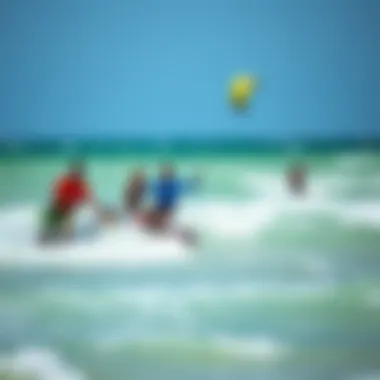
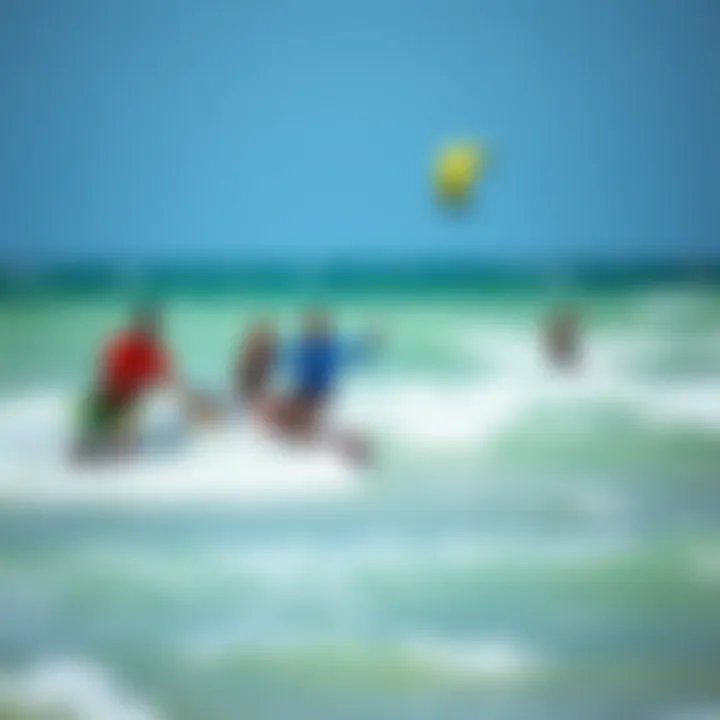
Sustainability Practices in Kiteboarding
As the sport grows in popularity, adopting sustainability practices is pivotal for preserving the Florida Keys for future generations of kite surfers. Here’s how riders can do their part:
- Choosing Eco-Friendly Gear: Opt for brands that prioritize sustainable materials and practices. Equipment made from recycled materials can significantly reduce one’s carbon footprint.
- Joining Clean-Up Initiatives: Many local communities organize beach clean-ups. Participating in these events is an impactful way to contribute positively to the environment and connect with fellow enthusiasts.
- Educating Others: Knowledge is power. Sharing information about protecting the environment with newcomers can foster a culture of responsibility within the kite surfing community.
It's clear that with great thrills come great responsibilities. By being mindful of theseEnvironmental Considerations, kite surfers can enjoy their passion while ensuring the preservation of the Florida Keys' stunning natural landscape for years to come.
Future Trends in Kite Surfing
The landscape of kite surfing is ever-changing, shaped by innovations and shifting attitudes. Understanding the future trends in kite surfing is crucial for enthusiasts and professionals alike. These developments not only influence the sport's accessibility but also improve safety and sustainability, making the allure of kite surfing in the Florida Keys even more enticing. The coming years promise to usher in a new wave of advancements that cater to both seasoned riders and beginners eager to dive into the thrilling sport.
Technological Advancements
When it comes to the future of kite surfing, technology stands out as a driving force. Manufacturers are experimenting with lighter materials and advanced designs, creating kites that are not only more durable but also easier to control. For instance, the introduction of smart kites equipped with sensors allows riders to gather real-time data about wind conditions and ocean currents. This information can dramatically enhance decision-making, especially for those venturing into unknown waters.
Furthermore, boards are getting lighter and more versatile. Innovations like enhanced rocker and flex patterns provide better responses to varied riding styles. The rise of inflatable kites also offers an interesting advancement, as they maximize portability while maintaining performance. Improved safety features are also being integrated into gear, such as quick-release systems that can save lives in emergency situations. With these developments, the sport becomes more engaging—not just for contestants but also for casual adventurers seeking the thrill of the sea.
Increasing Popularity and Accessibility
Kite surfing is gaining traction like nobody's business. Factors driving this surge include better education about the sport and an increase in kite surfing schools around the Florida Keys. Local communities are catching on, forming tight-knit networks that welcome newcomers with open arms, creating a vibrant culture that promotes skills exchange and community building.
One notable trend is the introduction of all-inclusive kite surfing packages, allowing travelers to explore the Keys while learning from experienced instructors. This approach simplifies the logistics, making it less daunting for beginners. Additionally, social media plays a pivotal role in spreading the word about kite surfing. Platforms like Instagram and Facebook are teeming with breathtaking images and videos, inspiring others to take the plunge and try the sport themselves.
- Emerging spots: As more locations appear on the radar for kite surfing, the opportunities to explore new territories expand.
- Demographic shifts: Younger crowds are taking to the sport, bringing fresh energy and ideas, which changes the dynamic and inclusivity of surfing events.
The accessible nature of today’s offerings coupled with technological innovations ensures that the future of kite surfing looks promising.
Higher participation levels not only enrich the local culture but also contribute to the sustainability of the sport through increased awareness and community engagement. As trends evolve, they promise to secure the legacy of kite surfing in the enchanting waters of the Florida Keys.
Travel Tips for Kiteboarders
Traveling with kiteboarding gear can be a bit like preparing for a mini expedition. It’s not just about tossing your equipment in a car or plane; it’s about ensuring everything arrives in one piece and ready to hit the waves. Knowing how to pack, where to stay, and what to expect can make all the difference in your kite surfing experience. Here’s a detailed guide to help you navigate the ins and outs of your trip to the Florida Keys.
Essentials for Traveling with Gear
When it comes to traveling with kiteboarding gear, packing smart is key. Here are some essentials to consider:
- Kite Size and Inflation: Choose kites based on local conditions. A good fit means better handling and more fun. Deflate and pack carefully to avoid punctures.
- Board Protection: Use a padded bag for your board to guard against dings during transport. You might not think a few bumps can create issues, but a chipped board can spoil a session.
- Harness and Accessories: Always carry your essentials like a good harness, safety release, and kite lines in your carry-on. Losing these items could ruin your trip.
- Tools and Repairs: Bring along basic repair tools—like a leash or extra lines. No one wants to be stranded with a busted kite, especially when the wind is just right.
- Weight Considerations: Airlines can be strict with luggage weight. Know the limits and pack accordingly. Sometimes, it’s worth paying for an additional bag if your gear needs more room.
Every kiteboarder should be mindful of these elements while planning their travel to avoid stress upon arrival.
Accommodations and Local Amenities
Finding the right place to stay in the Florida Keys can enhance your kiteboarding experience. Here are some things to think about:
- Proximity to Kiteboarding Spots: Look for accommodations near popular spots such as Key West or Marathon. Less time commuting means more time enjoying the water.
- Local Amenities: Comfortable accommodations can significantly elevate your stay. Consider facilities that offer storage for your gear, laundry services, and even on-site restaurants or cafes.
- Community Vibe: Staying in a place that caters to kiteboarders can provide invaluable local tips. Connect with fellow riders and possibly make some new friends.
A good option in the Keys could be the Beach House or Big Pine Key Fishing Lodge, both known for their rider-friendly atmospheres and amenities for water sports enthusiasts. Their locations make launching a breeze and you can easily rent additional gear if needed.
Tip: Always check guest reviews and ratings on trusted platforms to ensure the accommodation matches your needs and expectations.
Navigating the logistics of traveling with kiteboarding gear might seem daunting, but with these tips, you'll likely find the journey to be as enjoyable as the time you spend riding the waves. Preparing adequately enhances your experience, allowing more focus on the thrill of kite surfing amidst the stunning beauty of Florida's coastal waters.
Epilogue: The Unique Appeal of Kite Surfing in the Florida Keys
In contemplating the unique allure of kite surfing in the Florida Keys, it becomes clear that this sport transcends mere recreation; it's an immersive experience that blends adrenaline, harmony with nature, and a sense of community. You can’t help but feel drawn to the bright waters and the exhilarating winds that make this destination a kiteboarders’ paradise. The fun isn’t just from flying across the water, it’s the whole culture surrounding it that leaves one wanting more.
Key Elements of the Experience
Kite surfing in this region isn’t merely about the sport; it’s about the atmosphere that envelops riders upon arrival. Here are some key elements that contribute to its irresistible charm:
- Vibrant Scenery: The striking contrast of cerulean waters and lush palm trees set a dramatic backdrop. Each session becomes a visual feast, with kites dancing gracefully in the wind.
- Diverse Conditions: From shallow flats ideal for beginners to challenging waves for experienced riders, the Keys offer a variety of conditions to suit all skill levels.
- Community Spirit: The camaraderie among fellow kite surfers is palpable. Whether you’re a newbie looking for tips or an expert teaching a friend, there’s a bond that ties everyone together. Sharing experiences at local hotspots fosters friendships that can last a lifetime.
Benefits to Consider
Choosing kite surfing as a hobby or a sport comes with myriad benefits especially when pursued in such an idyllic setting as the Florida Keys:
- Physical Fitness: Kite surfing is a full-body workout. Once you get the hang of it, you’re engaging muscles you didn’t even realize you had. Improved core strength, flexibility, and balance are just tips of the iceberg.
- Mental Well-Being: The sheer joy of gliding over water can serve as a welcome stress reliever. The focus required to navigate the elements ultimately cultivates mindfulness.
- Adventure and Exploration: Whether you're familiarizing yourself with a new location or mastering a fresh technique, each day on the water brings the thrill of adventure.
Final Thoughts
In sum, kite surfing in the Florida Keys is not just a sport; it's a lifestyle, woven into the very fabric of island culture. The combination of scenic beauty, inclusive community, and diverse experiences creates an unforgettable backdrop for anyone eager to embrace the waves. Rather than simply seeking thrills, kite surfers here often find a heartfelt connection to nature and each other. It is this blend of personal growth, shared joy, and natural beauty that makes kite surfing in the Florida Keys truly unique.
The Florida Keys aren't merely a location for kite surfing; they are a realm where wind, sea, and camaraderie unite, creating a haven for those drawn to adventure.
As you consider embarking on your kite surfing journey, remember it’s not just about the wind in your hair but the friends you'll meet and the stunning sights you'll see along the way. Happy kiting!



